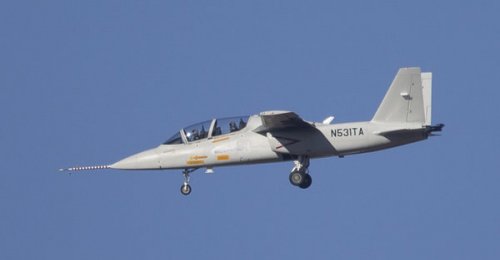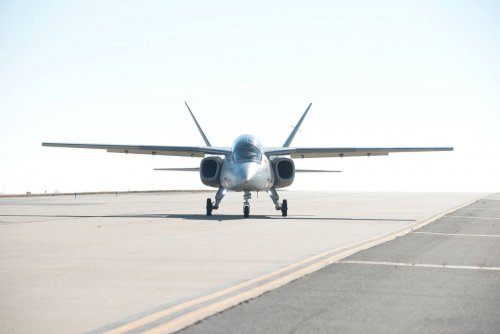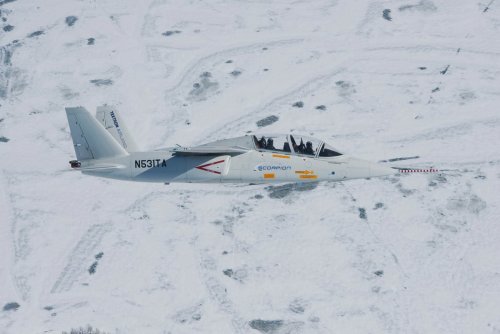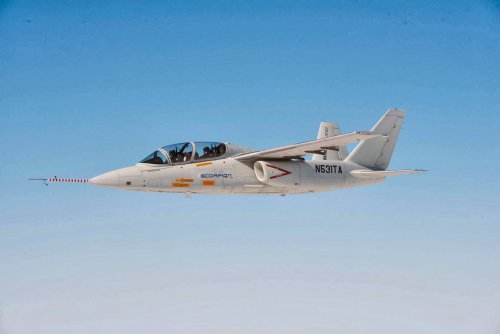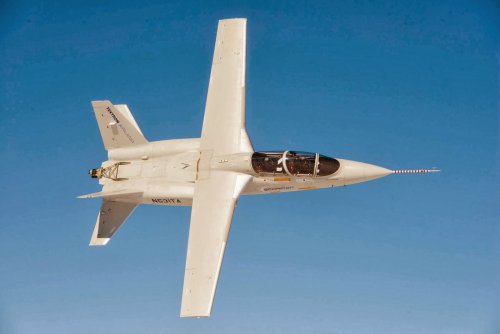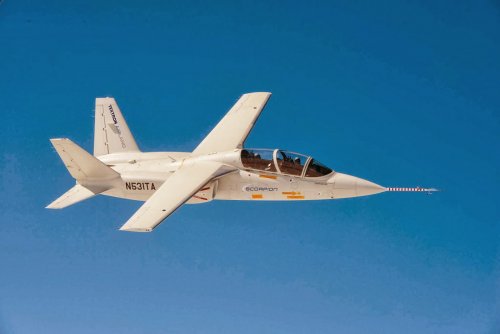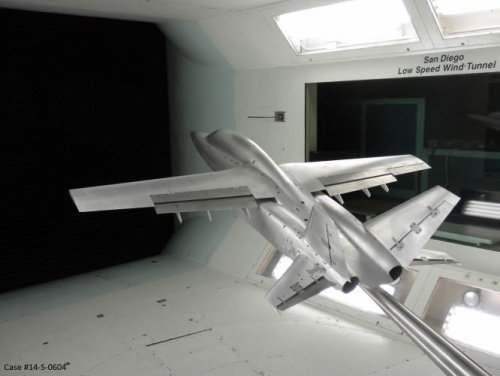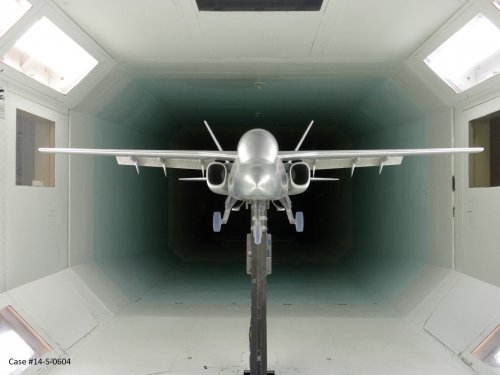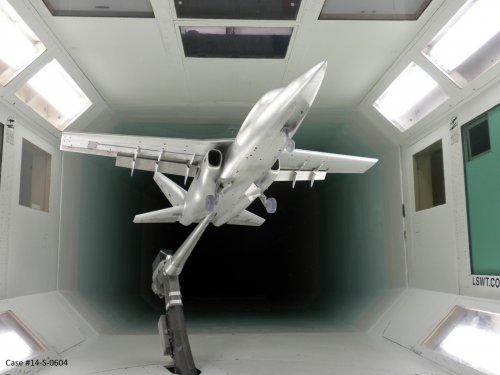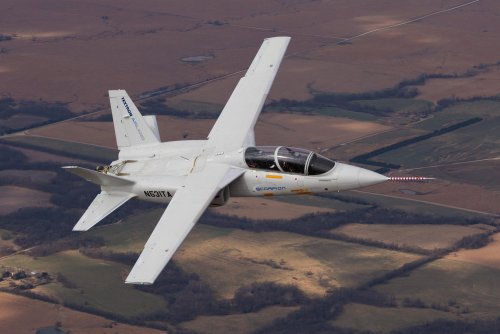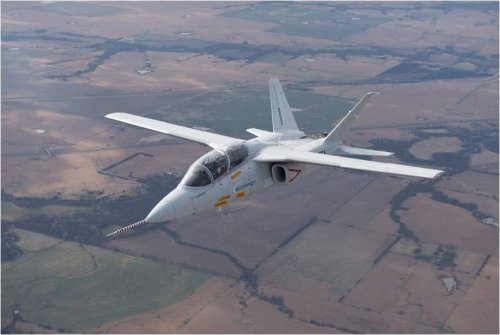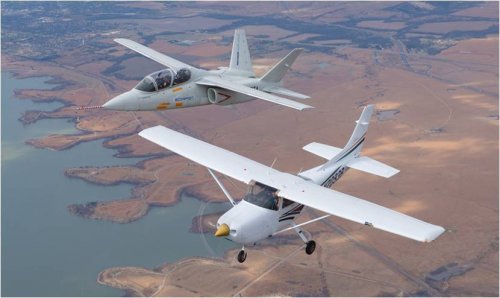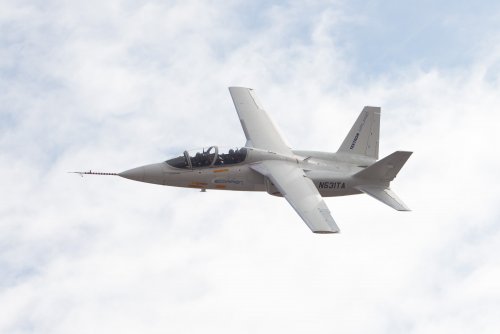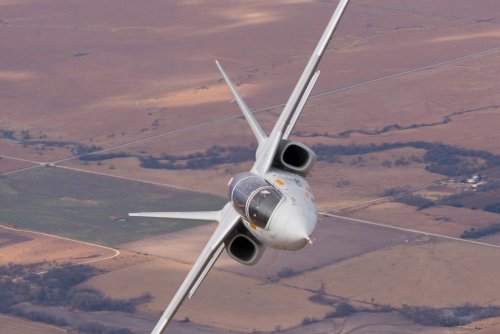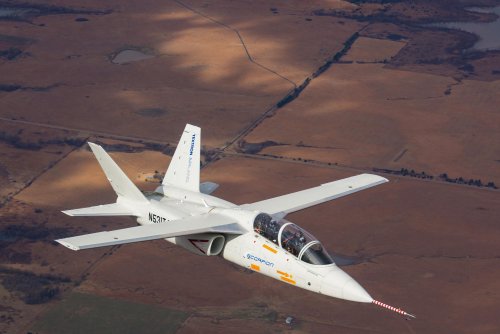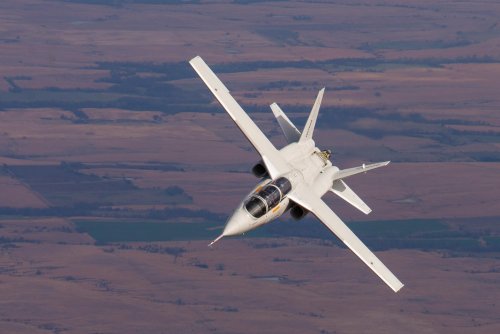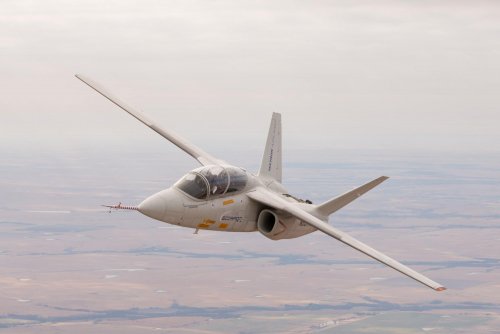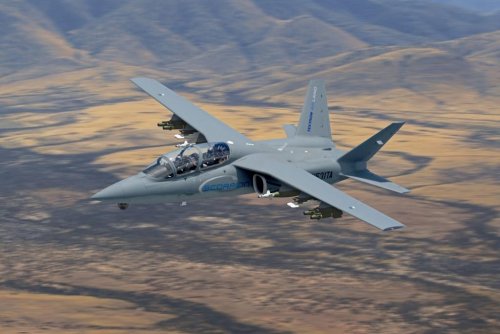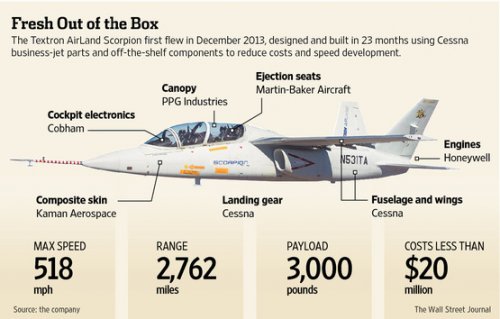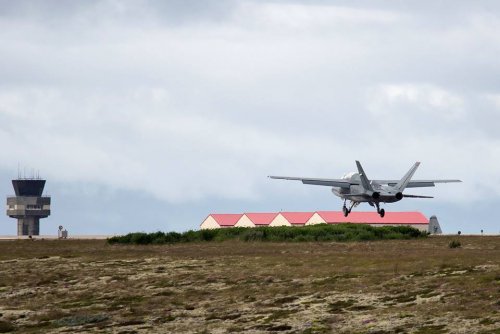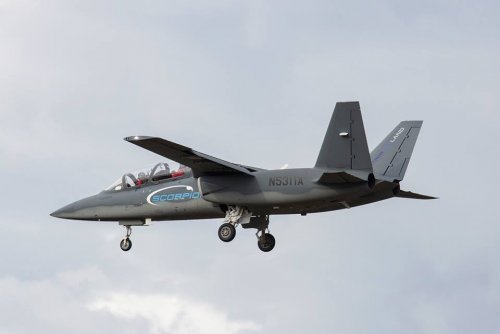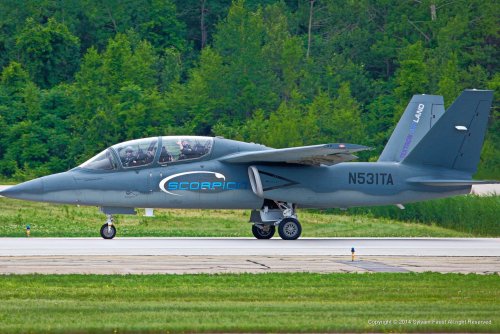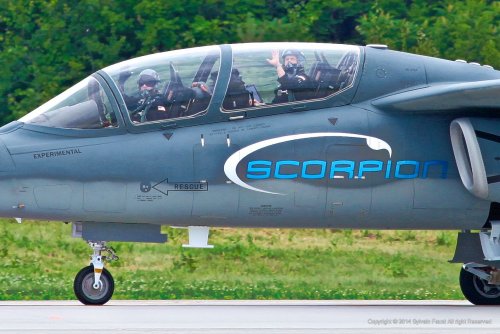Just two-and-a-half years ago the Textron AirLand Scorpion intelligence, surveillance and reconnaissance (ISR)/strike jet was a concept in a PowerPoint presentation, but it has now made its international debut at Farnborough 2014.
Designed from the outset as a platform that can accommodate a number of ISR sensor and weapon options, the Scorpion has a straight-wing, twin-tail composite airframe with a tandem cockpit. Its twin Honeywell TF731 powerplants produce about 4,000 lb of thrust each, to give the aircraft a maximum speed of about 450 kts.
Most crucially, however, the Scorpion will cost less than USD20 million to procure and around USD3,000 per hour to operate, according to Textron.
Detailing the rationale behind the Scorpion's development during a briefing at Farnborough on 15 July, Textron CEO Scott Donnelly explained how the company identified a niche between the high and low ends of the combat aircraft market that remained unaddressed by any new designs.
"If you look at the market for military fixed-wing aircraft in the world, for the last probably 30 or 40 years, all of the investment from the US Department of Defense, the UK MoD [Ministry of Defence], European partners, everyone, was [focused on] investing in and developing extraordinarily high-performance aircraft; things like the F-35s, Eurofighters, Super Hornets, aircraft of that class," said Donnelly. "We also see that there's capability in the single-engine turboprop market served by aircraft like our AT-6 and some others, but there was a huge gap between the high end and the single-engine turboprop market. So we undertook a development programme that, while it's a military product, we ran much more like one of our commercial programmes.
"In less than two years we went literally from a PowerPoint slide with some key operating requirements, to the time we flew that aircraft [in December 2013].
The aircraft has now been in tests for about six months, it's got 130 hours flying on it, it's performing superbly, and as you can see it's out at our chalet on the static display. We flew it over 4,700 nautical miles from Wichita [Kansas] with no issues whatsoever, so we've now entered the marketing phase of that aircraft."
Emphasising the Scorpion's reliability (in contrast to the Lockheed Martin F-35's engine fire issues, which had kept it away from the airshow), Textron AirLand President Bill Anderson noted of the Scorpion to date: "We have not lost one scheduled flight for unscheduled maintenance, and the only thing we needed to get to the United Kingdom was good weather and fuel, and we got here right on schedule.
Remarking on how, at first sight, the Scorpion surprises people with its size - Textron's CGI press releases had certainly seemed to make it look smaller - Anderson noted: "It's a 21,250 lb max gross take-off weight airplane. It is a large airplane. One of the unique features about the airplane is that it has an 82 cubic foot payload bay in the centre."
The Scorpion also has six hardpoints - three on each side - to carry additional sensors, fuel or weapons, up to a total payload capacity of 9,300 lb. On its static display at Farnborough the aircraft was sporting Textron G-CLAW (four per hardpoint) and Textron/Thales Fury (three per hardpoint) light guided glide munitions.
Anderson added that the Scorpion "has cooling and electricity for all of today's high-end ISR packages" and that "no other aircraft in this class can offer that capability".
Detailing a typical mission performance for the Scorpion, Anderson said: "We can fly out 150 miles with a combat load, stay on station for five hours, return to base and land with reserve fuel, all with no in-flight refuelling."
That said, the aircraft has, in fact, been designed to accept a Cobham hose-and-drogue flight refuelling system.
Textron identifies the primary missions of the Scorpion as: close air support; maritime security; aerospace control against low, slow airborne threats; and tactical jet training. Additional mission areas identified by the company include: irregular warfare support and counter-insurgency missions; border security, counter-narcotics missions; forward air control (airborne); strike co-ordination/armed reconnaissance, airborne on-scene commander missions;

humanitarian assistance/disaster response.
Asked about the prospects of the Scorpion addressing the US Air Force's T-X trainer requirement - set to replace the air force's Northrop T-38 Talon fleet with 350+ two-seat jet trainers from around 2023 - Donnelly told IHS Jane's : "The T-X programme office has been formed and they're in their requirements development phase as we speak. They've been issuing some draft versions of those requirements, and that's something that we're following very closely. . . . We think this aircraft would make a fantastic trainer. It's an easy-to-fly aircraft, a great aircraft to transition into a lead-in fighter-type role and, as far as our ability to go into T-X is concerned, we're very interested in doing that." However, he noted that this depends on what final requirements are released by the T-X programme.

